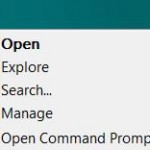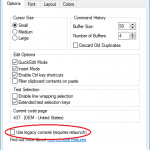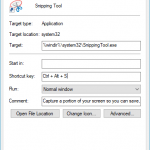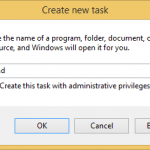Windows command prompt shell window does not support use of mouse click to access its various functions. For programmers or developers or advanced users who frequently use command prompt to do their works, the following list of keyboard accelerators also known as keyboard shortcuts or hot keys will be handy to speed up their task. The shortcut keys work in command prompt window or DOS prompt, works in almost every version of Windows including Vista, XP, 2003, 2000 and etc, not to be confused with keyboard accelerator in Windows.
Left/right arrow
Move cursor backward/forward one character.
Ctrl + left/right arrow
Move cursor backward/forward one word.
Home/End
Move cursor to beginning/end of line.
Up/down arrow
Scroll up (and back) through list of stored commands (called the Command Buffer or History). Each press of the up key recalls the previous command and displays it on the command line.
Page Up/Down
Recall oldest/most recent command in buffer.
Insert
Toggle insert/overtype mode (block cursor implies overtype mode).
Esc
Erase current line.
F1
Repeat text typed in preceding line, one character at a time.
F2 + key
Repeat text typed in preceding line, up to first character matching key.
F3
Repeat text typed in preceding line.
F5
Change the template for F1, F2, and F3 (described earlier) so that earlier commands are used as the template; press F5 repeatedly to cycle through the entire command buffer.
F6
Place an end-of-file character (^Z) at current position of command line.
F7
Show all entries in Command Buffer (History).
Alt-F7
Clear all entries in Command Buffer (History).
chars + F8
Entering one or more characters chars followed by F8 will display the most recent entry in the Command Buffer beginning with chars. Pressing F8 again will display the next most recent matching command, and so on. If no characters are specified, F8 simply cycles through existing commands in buffer.
F9 + command#
Display designated command on command line; use F7 to obtain numbers.
Ctrl-C
Interrupt the output of most Command Prompt applications.







